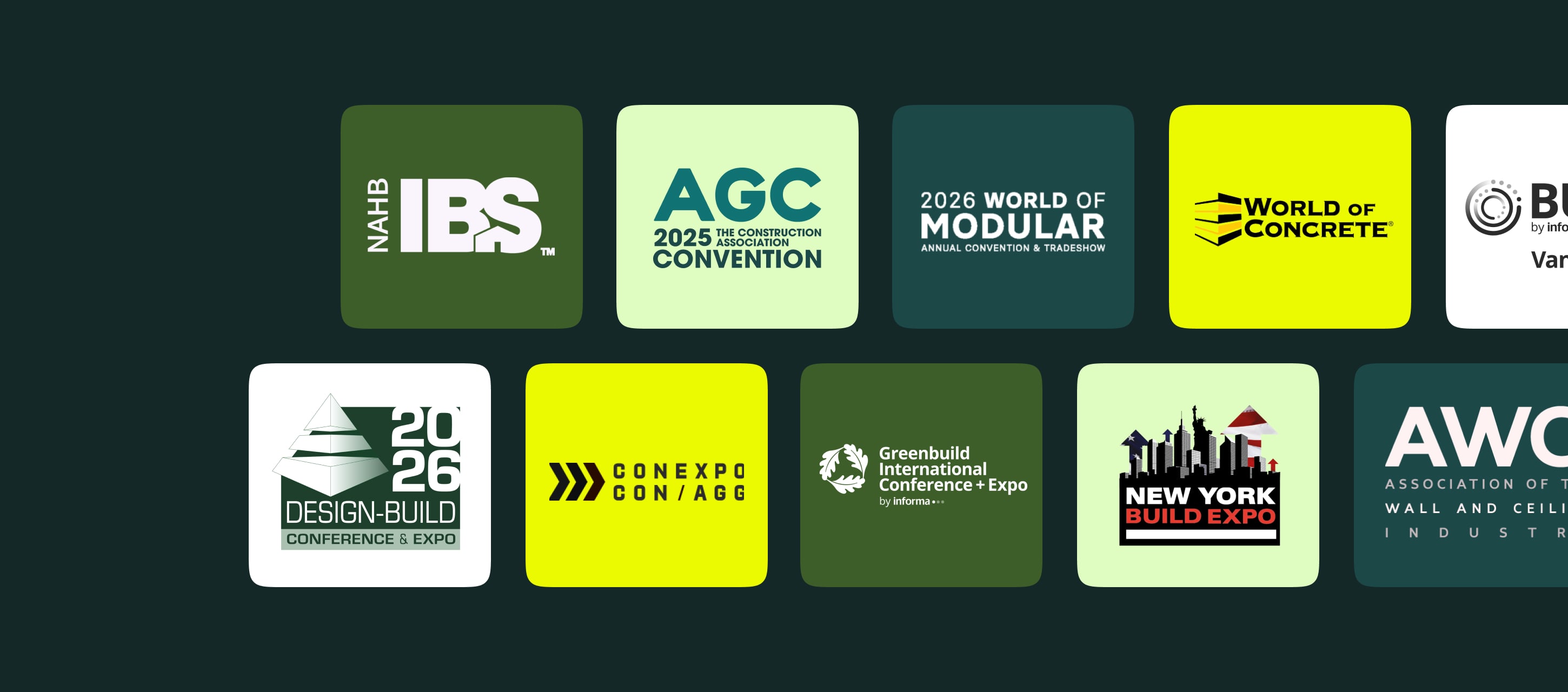Poor communication is a leading reason construction projects don’t meet their initial goals. A key element that can fix that issue is the construction submittal process.
Are you looking for ways to make your construction submittal workflows more fluid?
Learn what you need to know about submittals and how to streamline your system for approving them.
Contents:
What Is a Construction Submittal?
A construction submittal is a document or item that a subcontractor delivers to the general contractor (GC) and design team for approval to begin some aspect of their work.
The primary function of submittals is to specify the materials, equipment, systems, and even the methods that subcontractors will use to perform a task.
Of course, various submittals are necessary before any work commences. Therefore, the construction submittal process must begin in the early stages of the project and continue right up to the end.
These documents or items ensure that any work meets a project’s predefined standards as set in the prime contract. Without them, the final product could have subpar materials or construction that results in costly delays and change orders. Clearly, construction submittals play a key role in successful project management in construction.
Most Common Types of Construction Submittals
Construction submittals come in various formats, and you’ll accept different ones, depending on what best serves your process.
Shop Drawings
Shop drawings are precise illustrations or plans that a subcontractor creates to specify the manufacture or installation of project elements.
Shop drawings are most often necessary for prefabricated or custom-made components and equipment. These submittals allow the design team to verify that the product will work correctly and fit seamlessly into the design scheme.
For example, an electrician often needs to provide a shop drawing with the layout of outlets, circuits, and electrical panels. The design team can then ensure that any parts or installations are up to code and the project specifications.
As-Built Drawings
An as-built is the drawing of a contractor’s completed project, which reflects all changes that came during the build.
The design team can compare as-builts to the original shop drawings. They’ll confirm that any adjustments were approved changes that still meet specifications.
Product Data
A primary concern of the design team is project materials. Subcontractors provide product data as construction submittals, often as “cut sheets,” to share detailed product information.
A cut sheet is a short document that gives a summary of the features and specifications of a product, material, or piece of equipment.
Other names for cut sheets are specification sheets, technical data sheets, or data sheets. Details in the cut sheet include:
- Product dimensions
- Installation instructions
- Necessary prep work
- Performance data
- Warranties
A subcontractor might also need to supply your design team with test reports or materials certificates. An example of important product data is a cut sheet that includes the specs of a fan that subcontractors will install in your HVAC system.
Product Manuals and Blueprints
A cut sheet might not be able to provide enough detail to satisfy the design team’s review of a submittal, meaning something more substantial is necessary. In this case, subcontractors will supply full product manuals and blueprints.
Manuals can share more extensive instructions about operating and maintaining a part or system.
Complex installations often require detailed manuals and blueprints instead of cut sheets. This is particularly true for construction submittals for items and systems that play a key role in safety or need to meet strict codes.
For example, a fire alarm system would require details on programming, testing, and maintenance that come in the manual. Likewise, an elevator installation demands a manual to meet safety guidelines.
Product Samples
Samples are smaller physical pieces that provide an idea of the final product.
These are an excellent visual aid that helps the design team see and understand exactly what they’re dealing with.
Product samples can be especially important for visible components that should match a color scheme or textural requirements. It can be difficult to determine how closely something matches by looking at a data sheet, so samples of paint, tile, and flooring are typical.
Mockups
Mockups are another physical representation of a component, but they are in the form of a model.
Depending on the application, you may require a full-scale mockup, though scaled-down models are possible for aesthetic design elements.
The mockup uses the same methods and materials as those in the project. Then, the design team can carefully inspect it for quality assurance.
Elements of window systems and lighting are common mockups. Performance and structural mockups to test structural design and integrity are usually full-scale models that subcontractors may need to test on-site.
This list only shows some of the most common construction submittals. You should carefully review whether your project requires other types of submittals to ensure quality and safety.
Read More Read More Fillable PDFs vs. web forms: How to choose the right format to manage your submittals
What to Include in a Construction Submittal
The components of a construction submittal need to clarify the who, what, and when of the process. The sheet also needs to identify the contractor sending the submittal and the person who received it.
Other key identifiers include names, numbers, or codes for the submittal itself and its project. Submitted and received dates ensure good recordkeeping, communication, and timely completion.
The GC and design team also need space for notes. These can explain any revisions or corrections, as well as provide the reasons for any rejections. A version number and current status is another good way to keep track of how a submittal is progressing.
Consider this basic example of a submittal in the following table:
| Company Name | ABC HVAC, LLC |
| Address | 123 Fluix St., Anywhere, CA 94107 |
| Submittal ID | RT351 |
| Package Number | 57 |
| Project ID | 88-70519 |
| Project Name | Residential Tower |
| Submitted Date & Time | 4/17/2023 09:17 AM |
| Submitted To | Alexander Jones |
| Submittal Type | Shop Drawing |
| Received Date | 4/17/2023 1:23 PM |
| Approver(s) | Julia Nikolaenko, Nick Larsen |
| Version Number | 2 |
| Response | Approved |
| Notes | The updates now meet the design specifications. Thank you. |
Of course, you’ll more likely process construction submittals from templates in a digital format, such as the one we provide on our site.
Instead of doing them one at a time, subcontractors often send them as part of a package of submittals. In that case, they will provide a transmittal with the package.
A transmittal is a letter that serves as a record of the transmission of documents or items. It can serve as a cover sheet that lists all of the submittals in a package.
There’s a lot to share in a submittal, and one missing piece of information can quickly create bottlenecks. That’s why automating the process ensures your team has all the necessary information in submittals.
What the Submittal Process Looks Like
It’s best to customize the construction submittalreview process for each project. Your goal is to make the process thorough enough to avoid missing any vital details.
At the same, you don’t want to have too many steps so the process remains efficient and keeps the project moving.
The Stakeholders
The primary stakeholders are:
- The contractors and subcontractors, who submit requests
- The general contractor (GC), who oversees the submittal management process and serves as an intermediary
- The design team, consisting of the architect, engineers, and possibly their assistants, to give final submittal approval
Sometimes, the project owner or their representative might take part in approvals. However, well-run projects usually leave this in the hands of the architect and engineers.
Typical Steps in the Submittal Process
As mentioned, the exact steps for submittals in construction can vary, but they often follow this general format:
- The GC creates a schedule of submittals. This specifies the timeline for submittals, the parties responsible for each one, and a general timeline for approval.
- Subcontractors review the project specifications and prepare their construction submittals to meet those guidelines. They then submit them to the GC for review.
- The GC does a preliminary submittal review to catch any basic mistakes or inaccuracies. If everything looks okay, the GC hands it off to the design team.
- The design team does a detailed assessment of the submittal. They will send it back to the subcontractor for revision with notes if necessary or give it a stamp of approval if it’s acceptable.
- The GC gives the subcontractor either the approved or the rejected submittal. A rejected submittal requires resubmission, and an approved submittal allows subcontractors to begin purchasing supplies and preparing for their jobs.
The whole arrangement is crucial as you collaborate with contractors becausea submittal is what they use as a binding agreement to get paid for doing the work.
By the way, Fluix, a dedicated tool for construction documentation management, can simplify this process with its guest access functionality. You can invite subcontractors, clients, and other stakeholders to join the workflow and work on its tasks without the need for account creation or licenses. Simply send a link, and guests can access and complete their tasks in a web browser.
Read More Read More How to bring external users into work with you in Fluix without additional licenses
The Role of Automation
The process can involve a lot of notes and back-and-forth communication. As such, automation for workflow management in your construction projects makes things much easier.
Such programs streamline crafting and adjusting a submittal review process. They also help to keep notes organized and accessible. This is especially beneficial when multiple individuals on the design team need to review construction submittals.
For example, if the construction manager and engineer need to sign off on an item, they don’t have to repeatedly email a document to each other with notes.
They can both work on it in the platform and see each other’s timestamped notations. The convenience is a primary reason to digitize any construction site you work on.
Using a Construction Submittal Log to Keep the Process on Track
A submittal log is a document for tracking all construction project submittals and their current status.
Construction jobs often require hundreds of submittals. A shareable construction submittal log makes it easy for the entire team to understand an item’s status and when to move ahead on assignments.
You can use a simple spreadsheet for your submittal logs. However, you need to be sure that only responsible parties can edit it while leaving it accessible. Often, putting it within your construction management software simplifies this.
Your log should include:
- A cell that tells which trade or scope of work the submittal relates to so the team can search for and find relevant items quickly
- A spot for the current revision of a submittal so team members know which revision the design team approved
- A submittal and approval deadline to help keep contractors and the design team on schedule
- Who submitted and received each submittal so you can quickly contact the right party if there is a problem
- Each submittal’s status and general comments, which lets the GC understand if work can begin on the next phase
A log for construction submittals with these points makes construction work more straightforward and easier to manage.
Key Steps to Improve Construction Submittals
Even when you have an excellent construction submittal process, you can continually find ways to make it better. Keep these tips and best practices in mind.
1. Automate Whatever You Can
Keep primary templates for submittals, transmittals, logs, and schedules in your construction field management software, such as for example Fluix. Then, utilize advanced AI tools that can pull details from specifications to help you more quickly create a submittal schedule for each project.
Your management software can also send out automated updates and notifications so contractors can take action quickly.
2. Allow Simultaneous Reviewers
Sending a document to each reviewer to consider one at a time will prolong the approval process. Set permissions in your construction management system to let approvers complete their reviews at the same time.
3. Create Customized Reports and Updates
You can’t improve what you can’t measure. Use software that creates customized reports and status updates on projects so you can determine how to make things more efficient.
Clearly, construction submittals are a vital part of any job to help you streamline the work and manage risks in construction projects. However, you need a reliable system to oversee these documents and items, as well as communicate with all involved parties.
Fortunately, Fluix is a practical solution for construction companies that need a good strategy for construction submittals. With its convenient templates and workflow automation, you can optimize your review process to make your work site run smoothly.







